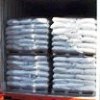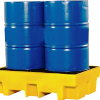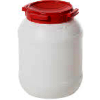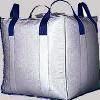Pure Calcium Lactobionate & USP FCC Food Grade Manufacturers Suppliers, India
Anmol Chemicals are manufacturers of Specialty Chemicals and Pharmaceutical Excipients, in India. Anmol Chemicals Group has manufacturing facilities spread across India, representatives in Houston Chicago USA and toll manufacturers in China. We make IP, BP, USP, Ph Eur, FCC or Food Grade, ACS, AR or Analytical Reagent Grade, LR or Laboratory Reagent Grade and Pure Grades of various chemicals. All our items are analyzed to meet the required standards.
Our manufacturing facility is FDA GMP approved and ISO-9001, ISO 14000, OHSAS 18000, ISO 22000, FSSAI HACCP certified. We are offering products manufactured as per Kosher and Halal approved method. We are pre-registered with "Reach" for export to European countries.
CAS No.: 110638-68-1, EC Code EINECS: 225-668-2, Molecular Weight: 790.68, Chemical Formula: C24H42CaO24-2H2O
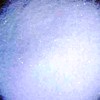
Calcium Lactobionate USP Grade
C24H42CaO24.2H2O -- 790.68
D-Gluconic acid, 4-O- -D-galactopyranosyl-, calcium salt (2:1), dihydrate.
Lactobionic acid, calcium salt (2:1), dihydrate.
Calcium lactobionate (1:2), dihydrate [110638-68-1].
Calcium Lactobionate contains not less than 96.0 percent and not more than 102.0 percent of C24H42CaO24.2H2O.
Identification:
A: A solution (1 in 50) responds to the tests for Calcium.
B: Infrared Absorption 197K.
C: Dissolve a quantity of it in water to obtain a test solution containing 10 mg per mL. Similarly prepare a Standard solution of USP Calcium Lactobionate RS in water containing 10 mg per mL. Apply separately 5 :L of the test solution and 5 :L of the Standard solution to a suitable thin-layer chromatographic plate coated with a 0.25-mm layer of chromatographic silica gel. Dry the plate in a current of cool air. Place the plate in a suitable chromatographic chamber lined with filter paper and previously equilibrated with a solvent system consisting of a mixture of alcohol, water, ethyl acetate, and ammonium hydroxide (50:30:10:10). Develop the chromatogram until the solvent front has moved about three-fourths of the length of the plate. Remove the plate from the chamber, and dry at 100 for 20 minutes. Allow to cool, and spray with a spray reagent prepared as follows. Dissolve 2.5 g of ammonium molybdate in about 50 mL of 2 N sulfuric acid in a 100-mL volumetric flask, add 1.0 g of ceric sulfate, swirl to dissolve, dilute with 2 N sulfuric acid to volume, and mix. Heat the plate at 110 for about 10 minutes: the principal spot obtained from the test solution corresponds in color, size, and RF value to that obtained from the Standard solution.
Specific rotation: between +22.0 and +26.5 .
pH: between 5.4 and 7.4, in a solution (1 in 20).
Halides: A 1.2-g portion tested as directed under Chloride shows no more turbidity than corresponds to 0.7 mL of 0.020 N hydrochloric acid (0.04%).
Sulfate: A 2.0-g portion dissolved in boiling water shows no more sulfate than corresponds to 1 mL of 0.020 N sulfuric acid (0.05%).
Heavy metals: Mix 1 g with 4 mL of 1.2 N hydrochloric acid, add water to make 25 mL, warm gently until dissolved, and cool to room temperature: the limit is 0.002%.
Reducing substances: Transfer 1.0 g to a 250-mL conical flask, dissolve in 20 mL of water, and add 25 mL of alkaline cupric citrate. Cover the flask, boil gently for 5 minutes, accurately timed, and cool rapidly to room temperature. Add 25 mL of 0.6 N acetic acid, 10.0 mL of 0.1 N iodine VS, and 10 mL of 3 N hydrochloric acid, and titrate with 0.1 N sodium thiosulfate VS, adding 3 mL of starch as the endpoint is approached. Perform a blank determination, omitting the specimen, and note the difference in volumes required. Each mL of the difference in volume of 0.1 N sodium thiosulfate consumed is equivalent to 2.7 mg of reducing substances (as dextrose): the limit is 1.0%.
Calcium Lactobionate FCC Food Grade
Calcium 4-(_,D-Galactosido)-D-gluconate
C24H42CaO24 Formula wt, anhydrous 754.66
CAS: [5001-51-4]
DESCRIPTION
Calcium Lactobionate occurs as a white to cream-colored, free-flowing powder. It readily forms double salts, such as the chloride, bromide, and gluconate. It is anhydrous when obtained by spray-drying, or the dihydrate when obtained by crystallization. It is freely soluble in water, but insoluble in alcohol and in ether. It decomposes at about 120°. The pH of a 1:10 aqueous solution is between 6.5 and 7.5.
Function: Firming agent in dry pudding mixes; nutrient.
REQUIREMENTS
Labeling: Indicate whether the product has been obtained through spray-drying or from crystallization.
Identification
A. The infrared absorption spectrum of a potassium bromide dispersion of the sample, previously dried at 105C for 8 h, exhibits relative maxima at the same wavelengths as those of a similar preparation of USP Calcium Lactobionate Reference Standard.
B. A sample gives positive tests for Calcium.
Calcium Content: Not less than 5.05% and not more than 5.55% of calcium (Ca), calculated on the dried basis.
Halides: Not more than 0.04%.
Lead: Not more than 2 mg/kg.
Loss on Drying: Not more than 8.0%.
Optical (Specific) Rotation [α]D20C: Between +23° and +25°.
Reducing Substances: Not more than 1.0%.
Sulfate: Not more than 0.7%.
Manufacturers
ANMOL CHEMICALS
S-8, SARIFA MANSION, 2ND PRINCIPAL SHAIKH HASAN MARG, MUMBAI 400009, INDIA
TEL: (OFF) 91-22-23726950, 23774610, 23723564. FAX: 91-22-23728264
e-mail: info@anmol.org
Copyright and Usual Disclaimer is Applicable
Exporters to USA, UAE, Europe, South Africa, Tanzania, Kenya, Egypt, Turkey, Nigeria, Uganda, Brazil, Chile, Argentina, Dubai etc.
Representatives in New York, Houston - Texas, Chicago - Illinois, Los Angeles.
Fast Selling IP BP USP ACS FCC Food Grades of Chemicals by Anmol Chemicals
Aluminum Chloride ---------- Ammonium Sulfate ----- Ammonium Persulfate
Aluminum Potassium Sulfate - Ammonium Chloride ---- Ammonium Bicarbonate
Ammonium Carbonate --------- Benzyl Alcohol ------- Boric Acid
Benzoic Acid --------------- Borax; Sodium Borate - Calcium Chloride
Calcium Hydroxide ---------- Calcium Acetate ------ Calcium Butyrate
Calcium Lactobionate ------- Calcium Levulinate --- Calcium Saccharate
Carbamide Peroxide --------- Citric Acid ---------- Calcium Phosphate
Calcium Oxide -------------- Calcium Sulfate ------ Chromic Chloride
Cupric Chloride ------------
Ferric Chloride ------------ Ferric Nitrate ------- Fumaric Acid
Gentian Violet ------------- Glacial Acetic Acid
Lactobionic Acid ----------- Magnesium Butyrate
Magnesium Oxide ------------ Magnesium Chloride --- Magnesium Sulfate
Malic Acid ----------------- Maleic Acid ---------- Manganese Chloride
Manganese Sulfate ---------- Methylene Blue ------- Oleic Acid
Octyldodecanol -------------
Propylene Carbonate -------- Potassium Acetate ---- Potassium Carbonate
Potassium Hydroxide -------- Potassium Chloride --- Potassium Phosphate
Potassium Bitartrate ------- Propylene Carbonate -- Selenious acid
Sodium Molybdate ----------- Sodium Perborate ----- Sodium Phosphate
Sodium Propionate ---------- Sodium Acetate ------- Sodium Bicarbonate
Sodium Hydroxide ----------- Sodium Chloride ------ Sodium Thiosulfate
Sodium Selenite ------------ Urea ----------------- Zinc Chloride
Other Best Selling Products
Ammonium Bromide ----------- Ammonium Phosphate --- Barium Chloride
Butylated Hydroxyanisole --- Butylated Hydroxytoluene
Calcium Nitrate Nitrite ---- Calcium Propionate --- Copper Sulfate
Ceric Ammonium Nitrate ----- Cinnamaldehyde ------- Isatoic Anhydride
Directly Compressible Calcium Carbonate ----------- Encapsulated Citric Acid
Encapsulated Fumaric Acid -- Encapsulated Sodium Bicarbonate -
Encapsulated Sorbic Acid
Potassium Bromide ---------- Potassium Iodide ----- Potassium Nitrate Nitrite
Sodium Bromate ------------- Skatole -------------- Sodium Butyrate
Sodium Nitrite & Nitrate --- Sodium Bromide ------- Sodium Diacetate
Sodium Formaldehyde Bisulfite Strontium Chloride -- Stannous Chloride
TBHQ Tertiary Butylhydroquinone
Calcium Lactobionate
Commercial Pure & USP FCC Food Grade, CAS 110638-68-1








